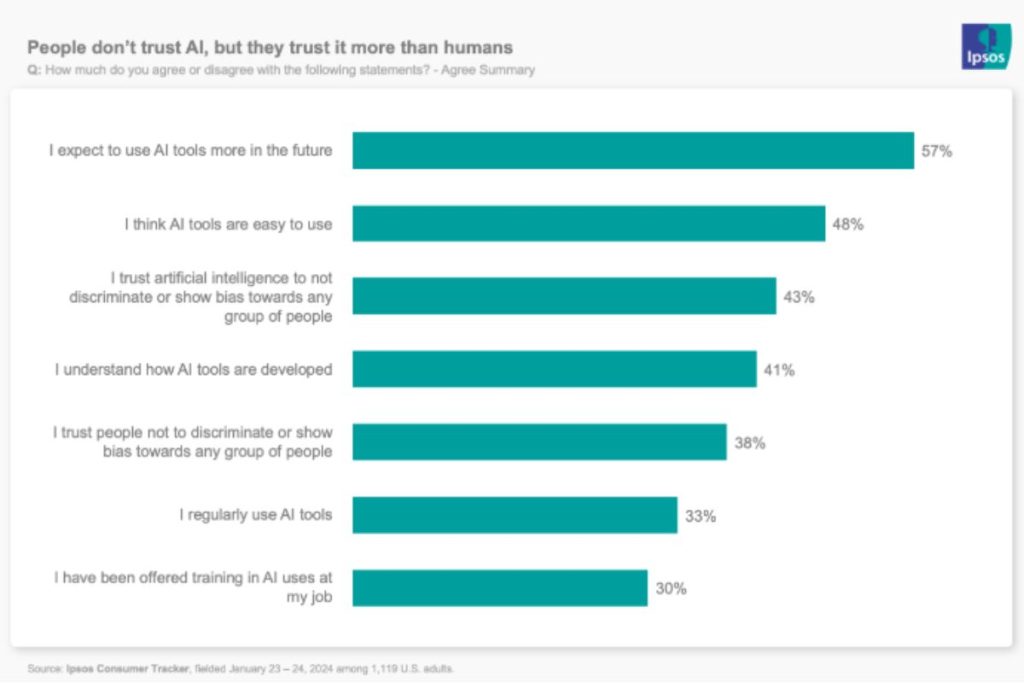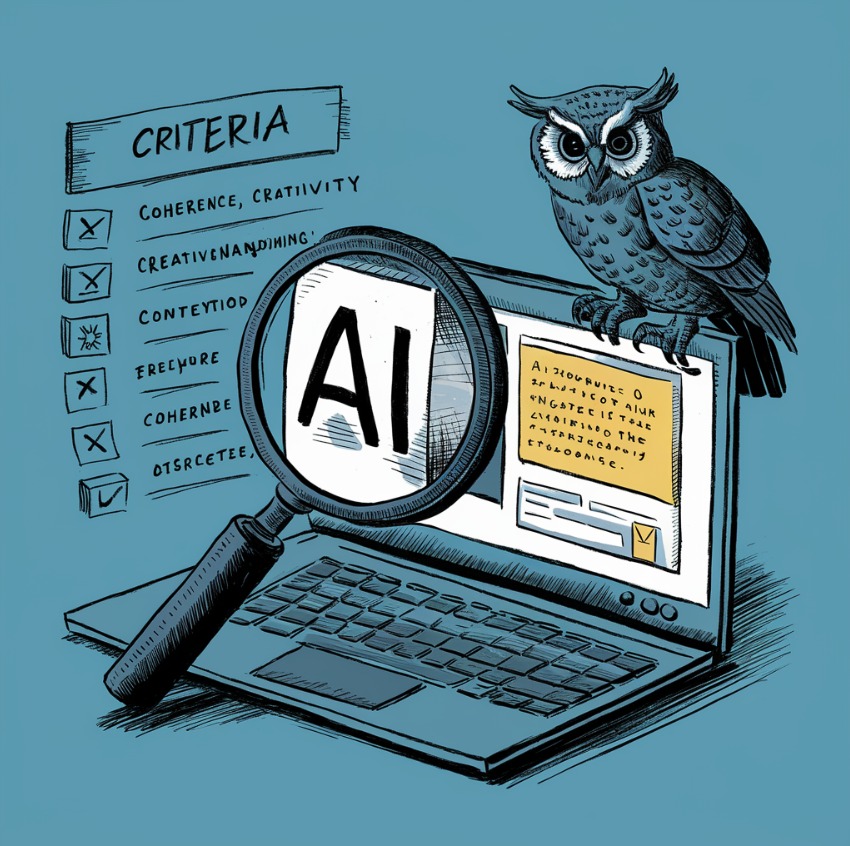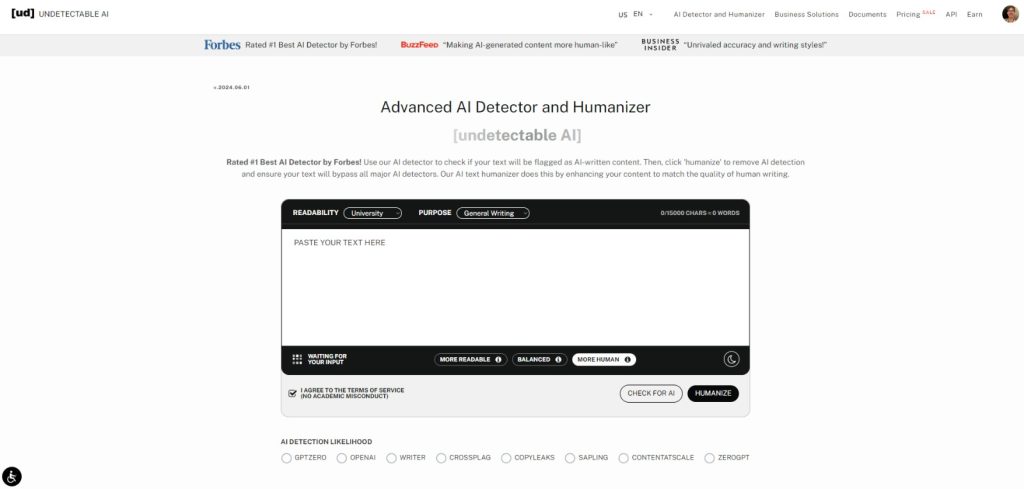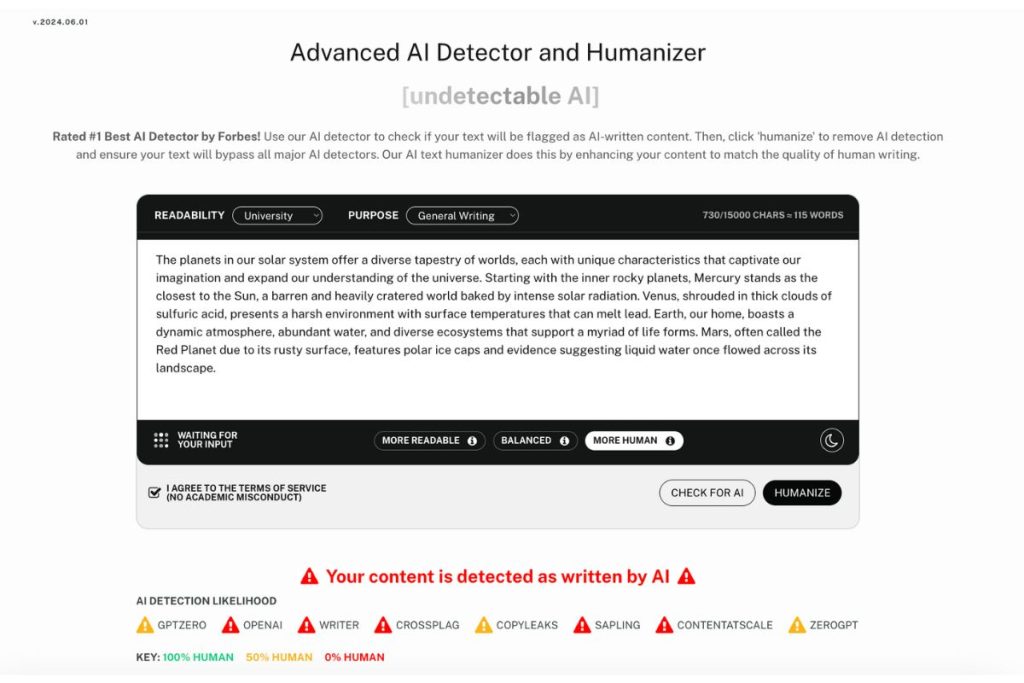We all know that AI is everywhere at this point. It’s changing how we interact and get things done.
But what’s really interesting is that many of us trust AI tools more than we do other people.

That’s not to say we’re fully sold on it—there’s still some doubt about how AI works, especially in the future.
The thing is, AI doesn’t have an exact face or voice that we can recognize.
We might think that we’re chatting with a human or reading something written by a real person, but it turns out that AI’s doing all the work without us knowing.
Without transparency, it’s getting tougher to tell the difference.
That’s why it’s important to know when you’re interacting with AI-generated responses.
This guide is here to help. We’ll go through the easiest ways to spot AI-generated content.
Keep yourself in the know in a world where technology is quickly becoming so much more integrated into our daily lives.
5 Methods for Recognizing AI-Generated Replies
AI-generated replies are what you get from a text response generator.
AI answers questions in seconds. These generators learn from the huge amounts of data being fed to them and can mimic human language patterns.
Take ChatGPT, for example. One of the most popular AI tools out today—available in 188 countries—there’s arguably no better AI that answers questions free of charge.


Never Worry About AI Detecting Your Texts Again. Undetectable AI Can Help You:
- Make your AI assisted writing appear human-like.
- Bypass all major AI detection tools with just one click.
- Use AI safely and confidently in school and work.
Individuals and businesses use it to write social media posts, help with complex tasks like research papers, and handle customer inquiries round-the-clock.
It’s a serious time-saver and can even help you make money because of the incredible content-generating power it can give you.
But while we know that AI brings a lot of benefits, being able to spot AI-generated replies ensures transparency and helps us know when we’re interacting with technology instead of a real person.
Authenticity in content matters, so here are effective methods for recognizing AI-generated responses.

1. Unusual Phrasing or Errors
The human eye is a pretty remarkable thing. And with a bit of training, it can detect the subtle discrepancies that AI makes with its replies.
One of the easiest ways to spot AI-generated content is by looking for statements phrased in unusual ways, often sounding quite unnatural.
Unusual phrasing occurs because AI models, as smart as they are, don’t always understand context or nuance correctly.
So when AI generates a sentence like, “The cat sat on the mat, enjoying its day of relaxation.”
While we can see that it’s grammatically correct, it still looks slightly off.
A human might write something like, “The cat was relaxing on the mat” instead.
AI’s version is clearly too formal for a sentence that’s supposed to be simple.
It also tends to include extra unnecessary details, which can be a dead giveaway.
Factual errors can also be a telltale sign. AI-generated content can have some major inaccuracies or outdated information.
These mistakes can happen because AI only knows the data it’s given, so it most likely won’t know the latest trends.
2. Response Consistency
AI tools aren’t the most consistent tools, either. AI models struggle a lot when it comes to maintaining tone, style, or level of detail throughout a conversation.
This inconsistency can be a clue that you’re dealing with AI-generated content.
Humans are naturally wired to adjust their language and style based on the situation or the person they’re talking to.
You might use formal language in a professional email, then switch to a more casual tone when chatting with friends online.
AI doesn’t know all these things.
AI models also can’t maintain the same level of detail throughout their responses.
They might provide some overly detailed information in one part and then be oddly brief in another.
A human writer, on the other hand, can be consistent in the detail they provide throughout the writing.
So, if you notice that the style, tone, or complexity of something you’re reading suddenly changes, it might be generated by AI.
3. Contextual Awareness
Context is important when it comes to interpreting any piece of writing. This is no problem for humans.
We can naturally incorporate context, coming from our own experiences and a more nuanced understanding of a topic. AI, however, struggles with this.
AI-generated content might miss subtle contextual clues or can’t adapt to different situations.
Let’s say when talking about a movie you’d recommend.
You’ll be able to consider adding context as to why you personally enjoy it, the reviews it gets, reactions from the audience, and even box office performance.
An AI response would most likely just be a generic plot description of a movie with some outdated information.
4. Knowledge Gaps or Over-Simplicity
While AI can sometimes generate detailed responses, it can also oversimplify complex subjects that it’s not fully aware of, leading to very noticeable knowledge gaps.
These gaps occur because AI relies on pre-existing data and patterns. It might not be able to cover every recent development on a certain topic.
If you’re planning to discuss the impact of a new scientific discovery, AI might not be of much help because it doesn’t know about it yet.
It might piece together some related information here and there, but it gets so vague that you can clearly tell that it’s made by AI.
These are just surface-level answers that completely lack any depth.
5. Testing with Uncommon Questions
You might be using a tool online that’s helping you out with an inquiry, but you’re curious if the answers they’re giving are done by AI.
An effective way to identify AI-generated responses is by asking uncommon or highly specific questions.
More complex or niche questions can reveal AI’s limited understanding and ability to generate accurate responses.
If you’re asking about a small (yet necessary) detail about a historical event you’re writing about, a text response generator might provide a vague answer because it can only rely on general knowledge.
You’ll need to hit the library or look up scholarly papers to get the answer you need.
It’s necessary to know if information is generated by AI to make sure that what we receive stays accurate and authentic and to understand if automated responses have biases.
Bonus: Use AI Detection Tools

Even with a solid attention to detail, modern problems require modern solutions.
Even the experts aren’t perfect. They fail to detect AI-generated content more than half the time. We need all the resources we can get.
This is where AI detection tools come into play.
These AI checkers are built to analyze text and easily spot patterns that suggest AI involvement within just seconds.
They work by comparing the text to already existing human and AI-generated content, using algorithms to detect very subtle differences in phrasing, structure, and context that might not be noticeable to us.
Using AI detection tools adds an extra layer of confidence when identifying AI-generated replies.
They are a big help for content that needs high accuracy and authenticity, like when working on academic work, news articles, and official documents.
By including these tools in your evaluation process, you can ensure that the information you get is something you can actually rely on. Something genuinely human-made.
How to Use Undetectable AI to Identify AI-Generated Responses
With so many AI detectors already out there, the accuracy can vary. Undetectable AI, named by Forbes as the top-rated AI detector and trusted by millions worldwide, stands out as a reliable choice.
Whether you’re verifying some academic papers or fact-checking news articles and specific documents, Undetectable gets the job done.
It’s so easy to use, too. Here’s how you can effectively use Undetectable to spot AI-generated responses.
- Open the free Undetectable AI Detector.
- Simply copy the text you want to analyze and paste it into Undetectable’s interface.
- Start the analysis by clicking the “Check for AI” button.
- Within seconds, Undetectable AI provides a clear indication whether the text is AI-generated or not, and also includes a likelihood percentage from popular AI tools to assess the content’s authenticity.

For writers who want to maintain authenticity while still benefiting from AI’s capabilities, Undetectable also has an AI humanizer feature.
This converts any detected AI content into a natural, human-written style, boosting your productivity without having to compromise on integrity.
While Undetectable AI enhances productivity and accuracy, it’s crucial to use it responsibly.
Avoid using AI tools for plagiarism or unethical practices.
You can use them instead to streamline your writing process and make sure that your work is ethical.
Don’t miss out on the chance to ensure the authenticity of your content with ease.
Try the Undetectable AI Widget Now! It’s incredibly simple – just copy your text and click the button to check for AI.
Conclusion
With scams on the rise and a lack of transparency, knowing how to recognize AI-generated AI-generated responses can keep you safe and informed in modern times.
While a lot of the digital interactions we make can be detected with the human eye, there are some that are now slipping through the cracks.
Keeping AI detection tools by your side won’t hurt.
Reliable tools like Undetectable AI can empower us to stay on top of the game.
This, combined with the methods discussed, can help confirm that the information we’re getting is accurate.
We’re not just protecting ourselves from misinformation but are also being ethical in how we use AI.
Technology can be used to enhance productivity and creativity while still maintaining transparency and authenticity in whatever we work on.
By doing so, we can contribute to a more reliable and ethical online environment for everyone.
